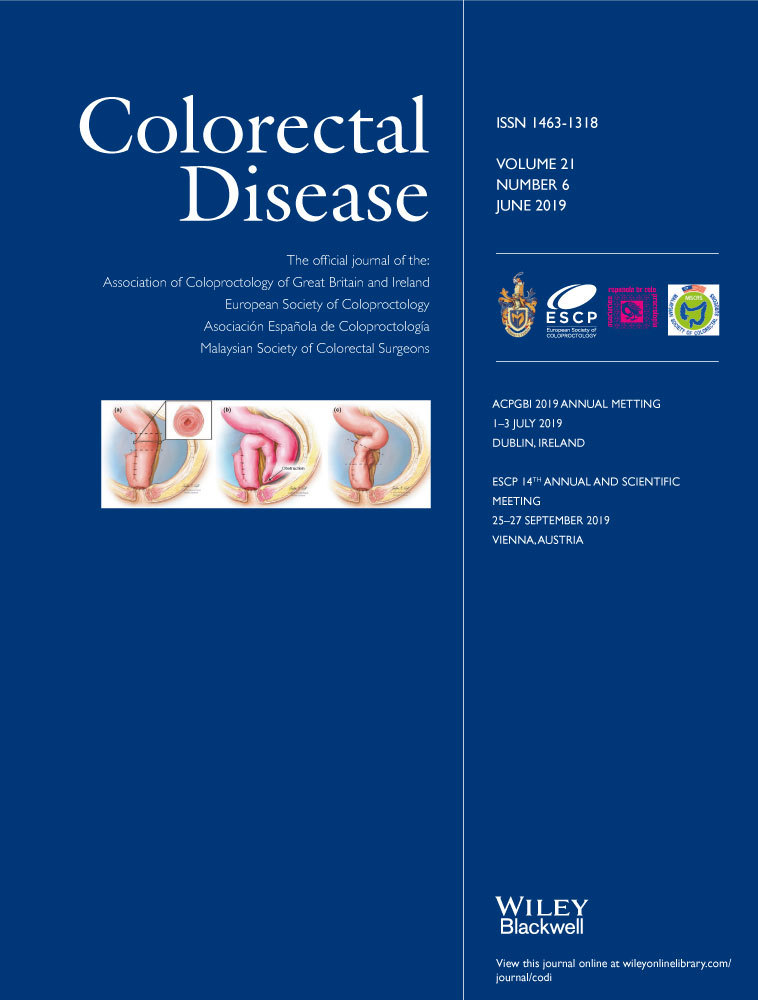Short- and long-term outcomes of laser haemorrhoidoplasty for grade II–III haemorrhoidal disease
Abstract
Aim
Laser haemorrhoidoplasty is associated with minimal postoperative pain and good symptom improvement in the short-term. However, less is known about its long-term efficacy. This study aims to determine the short- and long-term outcomes of laser haemorrhoidoplasty.
Method
Between October 2010 and May 2012, 50 consecutive patients with grade II–III haemorrhoids were treated with laser haemorrhoidoplasty. Short-term follow-up was assessed on days 1, 30 and 60 and long-term follow-up was at 5 years (haemorrhoidal stage reduction, pain, patient satisfaction, symptom improvement, incapacity for work, continence, complications, recurrence).
Results
Short-term follow-up was achieved for all patients and long-term follow-up for 44/50 patients (88%). At short-term follow-up, haemorrhoidal stage reduction was documented in 49 (98%) patients. Complete or good symptom improvement was reported by 36/50 (72%) and 10/50 patients (20%) at 60 days. Postoperative complications occurred in 9/50 patients (18%) with three Clavien–Dindo grade IIIb complications (two fistulas, one incontinence), one grade IIIa (perianal thrombosis) and five grade I (one perianal thrombosis, two perianal eczema, one local bleeding, one anal fissure). Postoperative pain was low (visual analogue scale 0–1) at day 1 in 37/50 (74%), at day 30 in 47/50 (94%) and at day 60 in 50/50 patients (100%). After a mean follow-up of 5.4 years (SD 5.4 months) the recurrence rate was 34% (15/44 patients) with a median time to recurrence of 21 months (range 0.2–6 years).
Conclusion
Although laser haemorrhoidoplasty achieves a high short-term success rate with respect to stage reduction and symptom improvement, it is associated with a high rate of minor postoperative complications and long-term recurrence. Therefore, laser haemorrhoidoplasty should be used with caution.
Conflicts of interest
The authors disclose no potential conflicts of interest, no use of off-label or unapproved drugs or products, and no use of previously copyrighted material. This work was not supported by any funding, grant or financial relationships.




